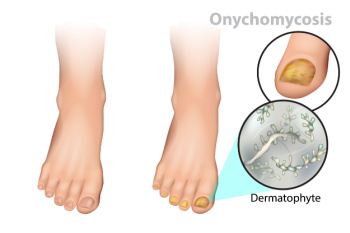
Fungal toenail infections are common and can affect anyone, especially those frequently exposed to warm, moist environments. Toenail infections often start subtly but can progress to cause noticeable changes in the toenail, including discoloration, thickening, and brittleness. Infected nails may turn yellow, green, or even black, and as they thicken, they may become challenging to trim. Patients might also experience discomfort, particularly when pressure is applied to the affected area. Fungi that cause the infection thrive in communal areas like showers, locker rooms, and gyms, where people are more likely to walk barefoot. Certain conditions, such as diabetes, a weakened immune system, or poor circulation, can increase susceptibility. A podiatrist can evaluate the severity of a fungal toenail infection and recommend effective treatment options, which may include topical or oral antifungal medications. If your toenails have been infected, it is suggested that you schedule an appointment with a podiatrist for an exam and treatment.
If left untreated, toenail fungus may spread to other toenails, skin, or even fingernails. If you suspect you have toenail fungus it is important to seek treatment right away. For more information about treatment, contact Richard DiBacco, DPM of Podiatry Associates of Erie, Inc.. Our doctor can provide the care you need to keep you pain-free and on your feet.
Symptoms
- Warped or oddly shaped nails
- Yellowish nails
- Loose/separated nail
- Buildup of bits and pieces of nail fragments under the nail
- Brittle, broken, thickened nail
Treatment
If self-care strategies and over-the-counter medications does not help your fungus, your podiatrist may give you a prescription drug instead. Even if you find relief from your toenail fungus symptoms, you may experience a repeat infection in the future.
Prevention
In order to prevent getting toenail fungus in the future, you should always make sure to wash your feet with soap and water. After washing, it is important to dry your feet thoroughly especially in between the toes. When trimming your toenails, be sure to trim straight across instead of in a rounded shape. It is crucial not to cover up discolored nails with nail polish because that will prevent your nail from being able to “breathe”.
In some cases, surgical procedure may be needed to remove the toenail fungus. Consult with your podiatrist about the best treatment options for your case of toenail fungus.
If you have any questions, please feel free to contact one of our offices located in Erie and Meadville, PA, . We offer the newest diagnostic and treatment technologies for all your foot care needs.



